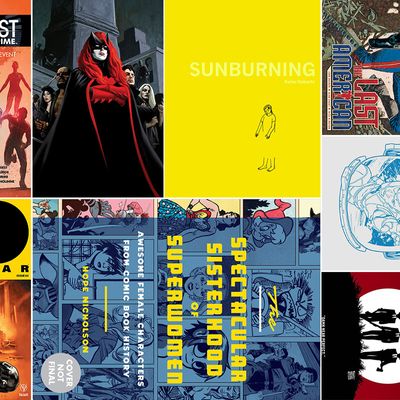
Each month, Abraham Riesman offers recommendations of comics, including book-length graphic novels, comics-format nonfiction, and ongoing series. With any luck, at least one of them will be a match for you.
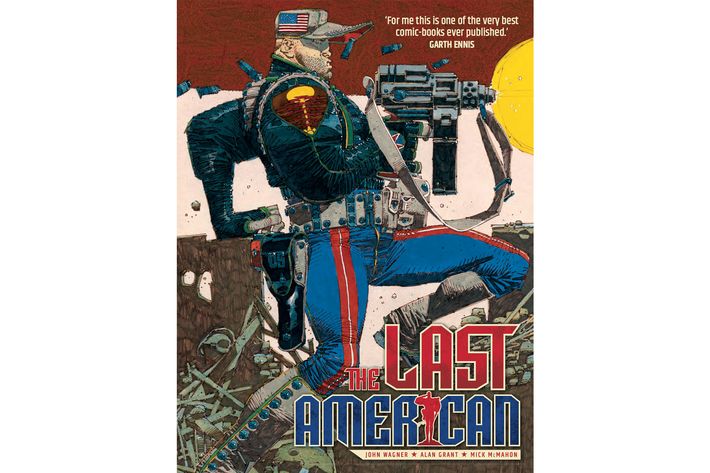
The Last American by John Wagner, Alan Grant, Mick McMahon, and Phil Felix (2000 AD)
These are grim times for the U.S., but The Last American reminds us that they could get a whole lot grimmer. This stunning graphic novella first hit stands in 1990, a Marvel-published brainchild of legendary Brit writers John Wagner and Alan Grant and artist Mick McMahon, but has long been out of print. So let us all give a hearty salute to the venerable British publishing house 2000 AD for republishing the four-part story in a glorious new edition, just in time for the apocalypse. It follows the wanderings of Ulysses Pilgrim, an American soldier placed in suspended animation on the eve of Armageddon who wakes up long after the birds landed and burned the land to a crisp. Upon waking, he traverses the cursed earth, ostensibly on a mission to find survivors and keep the legacy of the U.S. alive, but the genius of The Last American lies in its decision not to focus too much on the tension of whether or not he’ll come across anyone. Instead, the point here is to meditate on solitude, rage, and regret. As those three ingredients swirl into a madness-inducing cocktail for Pilgrim, Wagner and Grant think through the meanings of the Land of the Free in a way that only foreigners can, and McMahon astounds us with pencils and colors what Cormac McCarthy did with prose in The Road: convey a world that is both desperate and richly detailed. And yet, somehow, there is hope here. It’s hard to describe why that’s the case, but perhaps it’s simply because, even in the depths of our pessimism about humanity’s capacity for self-destruction, we can still create and appreciate great art.

Sunburning by Keiler Roberts (Koyama)
The reality of mental illness is that it isn’t linear. A depressive or hypomanic episode isn’t some Via Dolorosa wherein you start out fine, things get bad, things get really bad, then you have an epiphany and you’re even better than you started out. There is no setup or punch line to a psychotic break. Therefore, mental illness really shouldn’t sync up well with the traditional comic-strip format of clear vignettes arranged in a simple narrative order that drives toward a clear point or laugh in the final panel. And yet, somehow, Keiler Roberts not only makes that sync occur in her fantastic Sunburning — she makes a compelling argument that comic strips can depict mental-health issues in ways no other medium can. In Roberts’s rough-hewn cartooning, we see her live the life of an artist, wife, mother, and sufferer of bipolar disorder. She portrays her life not as a sequence of straightforward incidents with clear beginnings, middles, and ends, but rather as a heap of broken images. We might begin a page with a panel where a depressed Roberts eats a sandwich while thinking about how she’s too negative and end it with a panel where she and her husband look out the window to see a woman screaming at some cops. Are the two things connected? As is true of life when you’re in the hole, it’s hard to figure out cause, effect, and meaning in these strips, and that’s a significant virtue.
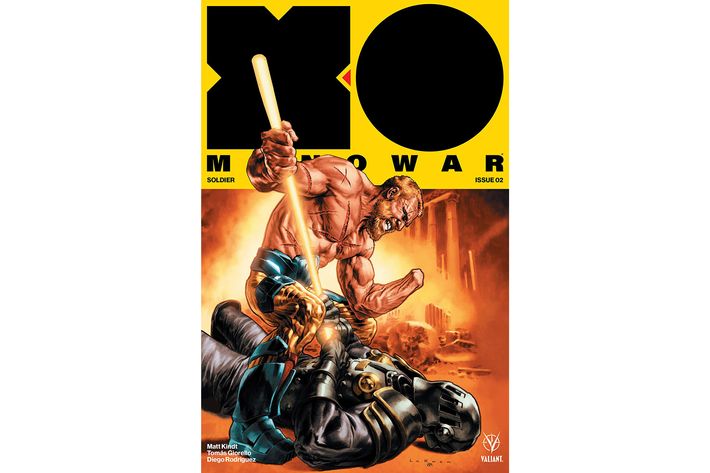
X-O Manowar by Matt Kindt, Tomás Giorello, Diego Rodriguez, and Dave Sharpe (Valiant)
One of the most loathsome trends in recent comics history is the rise of renumbering. Again and again, Marvel and DC have reset the odometers on their series, starting them back again with new No. 1 issues for no particular reason other than to manufacture an “event” that’ll juice sales. They always say these relaunches will be a jumping-on point for new readers, but they’re usually just old wine in a new bottle. Not so with the newly renumbered X-O Manowar from underappreciated indie publisher Valiant. In it, we find the title character — a time-displaced Visigoth with access to supernatural armor — attempting to start a new life on an alien world, and you honestly need no knowledge of anything that’s gone before for him in order to appreciate the series. All you do need is a hunger for the Heavy Metal-esque barbarian sci-fi that mad-genius writer Matt Kindt and out-of-nowhere artist Tomás Giorello deliver on page after page. This is high-concept surreal warfare at its finest, with visuals that drop your jaw and swell your chest. Fight on, noble goth.
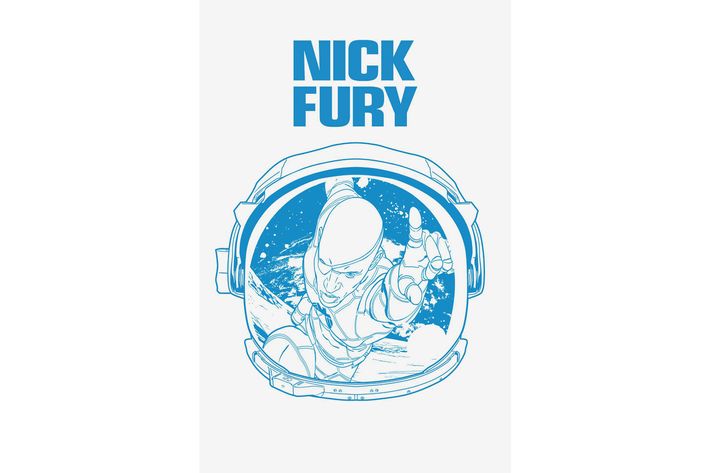
Nick Fury by James Robinson, ACO, Hugh Petrus, Rachelle Rosenberg, and Travis Lanham (Marvel)
If there were a year-end list for double-page spreads in comics, at least three of the top entries would have to come from the first issue of Nick Fury. Holy moly, is this a pretty book to look at — penciler ACO, inker Hugh Petrus, color artist Rachelle Rosenberg, and letterer Travis Lanham are like a four-person squad of super-soldiers who have learned to speak telepathically and act in perfect sync, delivering breathtaking action of the highest order. And, hey, longtime scribe James Robinson is no slouch, either, giving us a top-notch espionage story about Marvel’s premiere spy that feels about 80 times more thrilling than the last James Bond movie. If you’re looking for funny-book thrills, just let this creative quintet infiltrate your monthly buy pile.
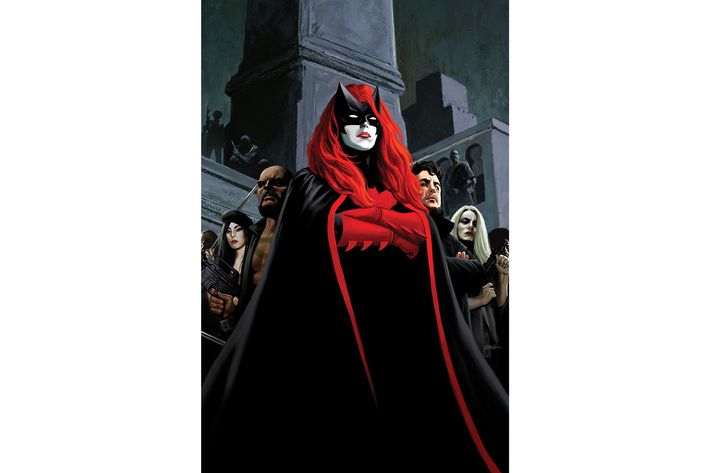
Batwoman by Marguerite Bennett, James Tynion IV, Steve Epting, Jeremy Cox, and Deron Bennett (DC)
While we’re on the topic of progressive twists on James Bond, let’s talk about Batwoman, the best tale of a queer female expert in international intrigue currently on the comics rack. Ever since her debut in 2006, Kate Kane has been one of the most interesting — and often underused — characters in the DC Comics pantheon: a gay Jewish woman kicked out of the military during the era of Don’t Ask, Don’t Tell who decides to take up a cape, cowl, and a truly amazing red wig and patrol the streets as Batwoman. She’s undergoing a bit of a renaissance as of late, acting as a team leader in the delightful Detective Comics relaunch and now starring in a new solo title that finds her traversing the globe in search of answers to a mystery connected to her personal past. But really, what she’s looking for is herself, and the dynamic writing duo of Marguerite Bennett and James Tynion IV — two of the better superhero writers in the game — give her (and us) plenty to chew on. Plus, we get artwork from living legend Steve Epting, so even if you just want to ogle great facial acting and photo-realistic action, you’ve come to the right place. We’re all rooting for you, Kate.
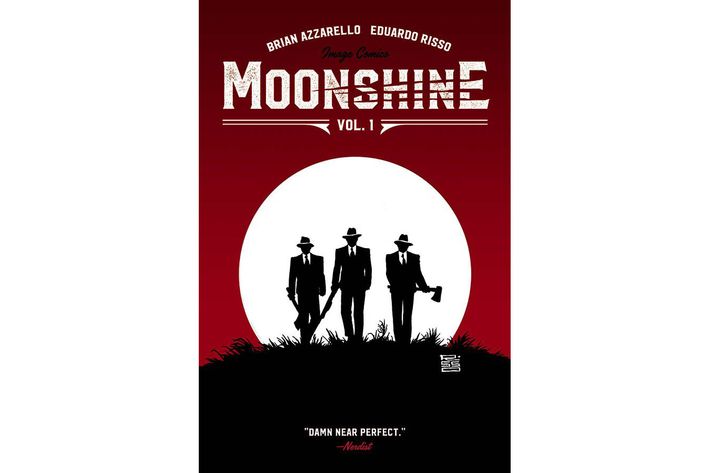
Moonshine by Brian Azzarello, Eduardo Risso, Jared H. Fletcher, and Cristian Rossi (Image)
Be forewarned: Moonshine is decidedly not for the easily offended. Writer Brian Azzarello has long been one of the comics medium’s best provocateurs, and in this creator-owned series, he lets his politically incorrect freak-flag fly — the way it deals with gender, race, and class are all risky and, perhaps, problematic. But if you’re willing to take a leap and let someone push your buttons, you’re in for a goddamn treat. Moonshine is the tale of an big-city gangster in the Prohibition era who goes on a business trip to a rural hamlet in order to make contact with the Mozart of illegal-booze production. Of course, all he finds is trouble and tragedy, and he’s soon in way over his head, facing down menacing locals and a mysterious beast that stalks the byways. Azzarello is at the top of his game here, as is his artistic partner from the epochal 100 Bullets, Eduardo Risso. Indeed, this might be Risso’s masterwork: He and color artist Jared H. Fletcher have fashioned an atmosphere of backwoods noir that’s unlike anything I’ve ever seen before, all mangled trees, distrusting scowls, writhing sexuality, glowing eyes, and heaping helpings of pitch-black inks. They don’t make ’em like this anymore.
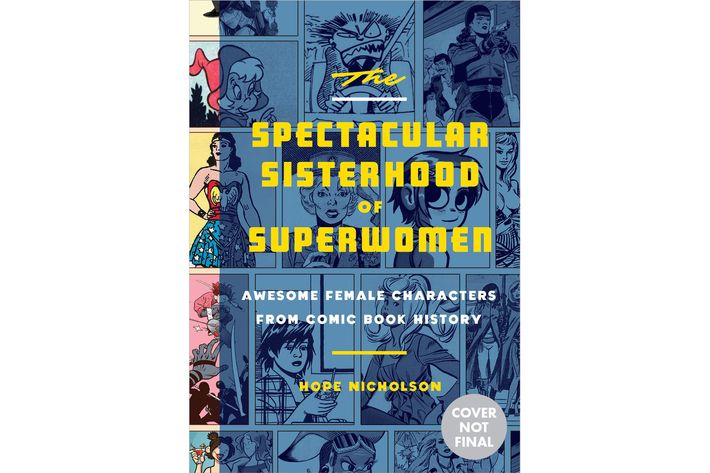
The Spectacular Sisterhood of Superwomen: Awesome Female Characters From Comic Book History by Hope Nicholson (Penguin Random House)
One of the most frustrating myths in comics is the assertion that the recent wellspring of mainstream female leads is a novel development. To look at it solely through the terms of presentism and self-congratulation is to ignore the long, rich, occasionally bizarre legacy of women characters in sequential art. Thank goodness for Hope Nicholson’s The Spectacular Sisterhood of Superwomen, an illustration-heavy prose book that plumbs more than 80 years of comics history to assemble an accessible, enlightening, and giddily fun chronology of the development of the four-color heroine. The big names are there, but so are fascinating curios like 1940s Nazi baddie-battler Señorita Rio and 1960s parachuting nurses Sue and Sally Smith. The book functions as a celebration of gender inclusion, but it’s also a vital document of comics history, providing new perspectives on all the major movements in American funny books, from superheroes to the underground. Whether you’re a young woman who wants to see whether or not comics can represent you, or you’re an expert who wants to educate yourself about sequential art, there’s something for you in this wise tome.
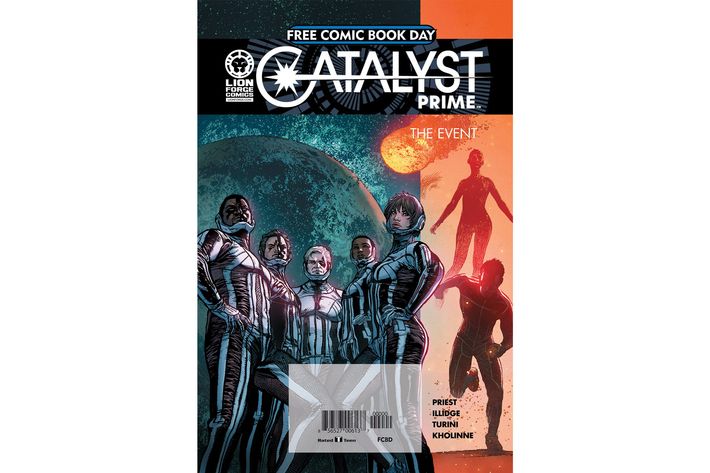
Catalyst Prime: The Event by Priest, Joseph Illidge, Marco Turini, Will Rosado, Jessica Kholinne, and Andworld Design (Lion Forge)
I’m hardly the first person to point this out, but we’re lucky to have Christopher Priest back. The venerable scribe — here simply credited as “Priest,” once known as Jim Owsley, and a gem by any name — took a decade off from comics, but is back in full force across an array of publishers, including the scrappy Lion Forge, which has enlisted him for an ambitious project. The company is looking to launch a new shared universe under the banner “Catalyst Prime,” and Priest and Joseph Illidge (one of the better commentators on comics, in addition to being a longtime comics editor) have joined art team Marco Turini, Will Rosado, and Jessica Kholinne to craft its first chapter. I’ll refrain from spoilers, but suffice it to say that The Event, which will be available for free as part of the annual Free Comic Book Day initiative, will make your mouth water for more. The recipe components are delicious: a varied cast, a hubristic central character, a curious accident, and an eyebrow-raising twist. Plus, there’s a lot of inclusion and diversity here, none of which is used to beat you over the head with self-congratulation. Consider me intrigued.




